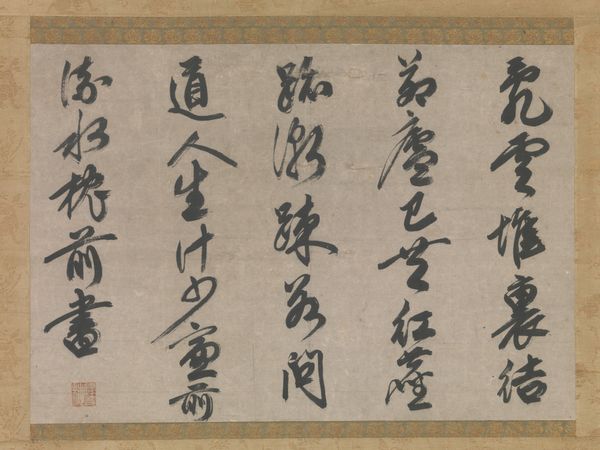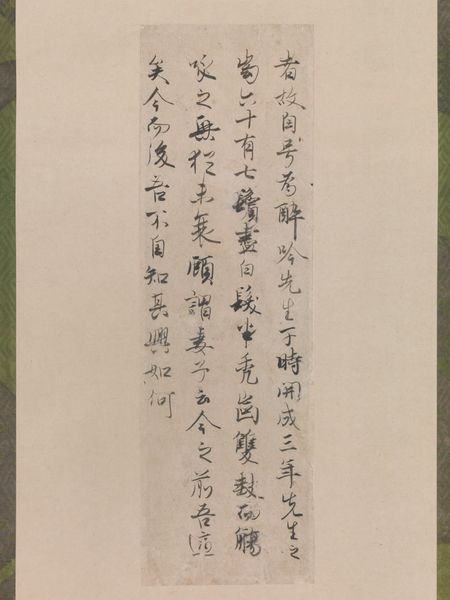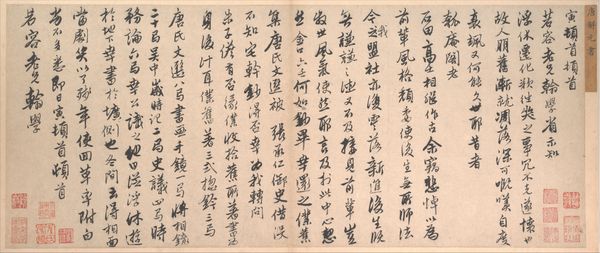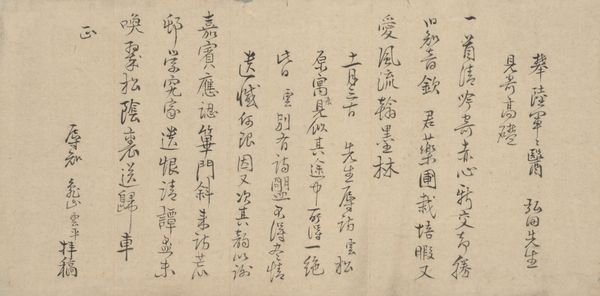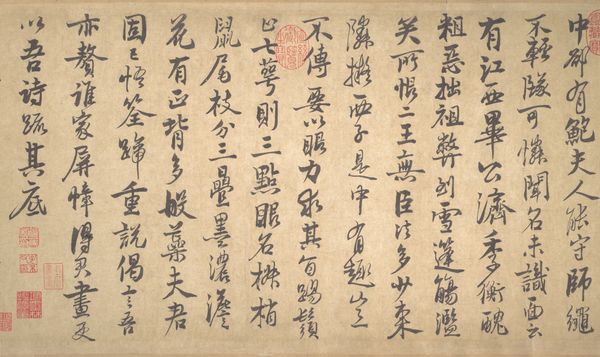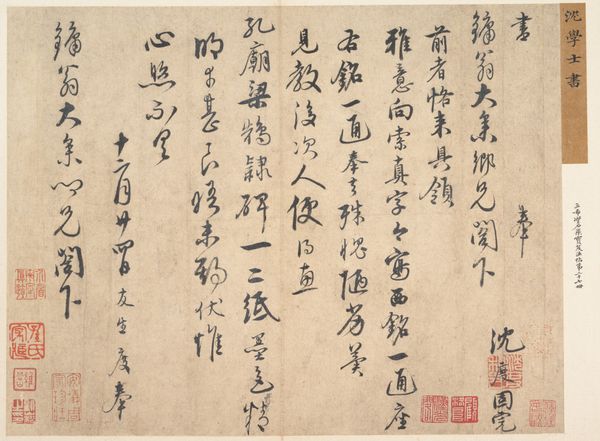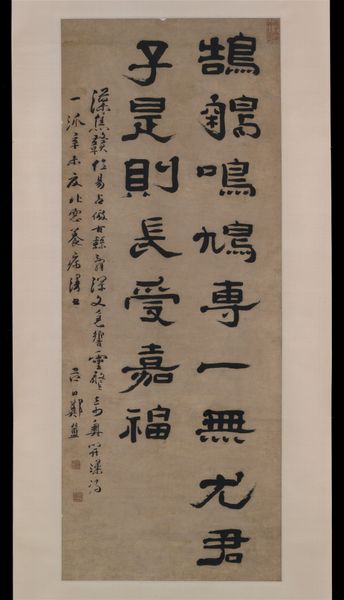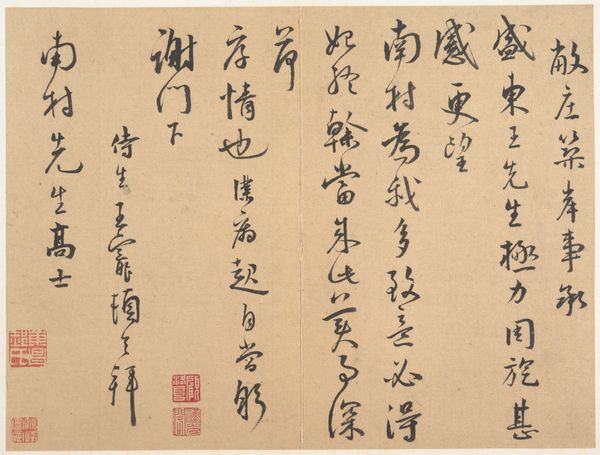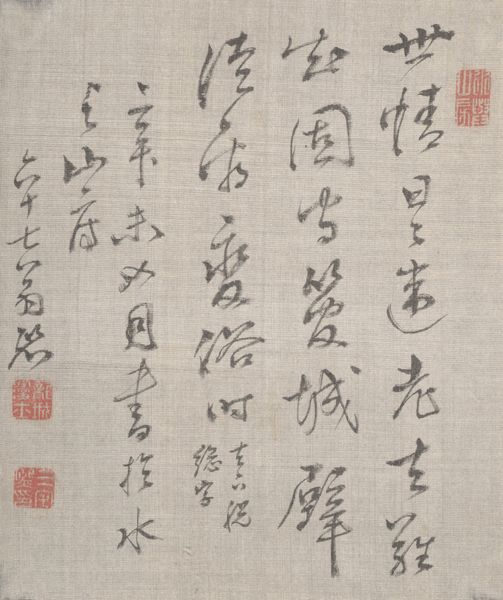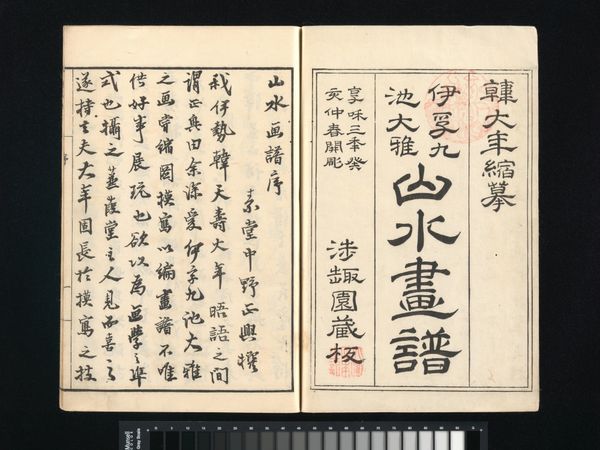
drawing, paper, ink
#
drawing
#
asian-art
#
paper
#
ink
#
calligraphy
Dimensions: Image: 6 5/8 x 10 3/8 in. (16.8 x 26.4 cm)
Copyright: Public Domain
Editor: Here we have "Poems on Paintings, Written for Ma Yueguan" created in 1754 by Jin Nong. It's ink on paper and considered a drawing and example of calligraphy. The strong, confident strokes definitely create a mood of authority. How do you interpret the role of text within this image? Curator: Well, the text isn't just *in* the image; it *is* the image. Consider the literati tradition within which Jin Nong was working. Calligraphy was esteemed as highly as, or even higher than, painting. Writing poetry on paintings—often one's own—became a powerful way to inscribe meaning, circulate ideas, and cement one's social standing. Editor: So, the act of writing the poems becomes almost performative? An assertion of status? Curator: Precisely. Think about the intended audience, Ma Yueguan, and the other members of their social circle. These poems were meant to be shared, discussed, and even emulated. The art exists as part of a broader exchange. Do you think that changes our experience with it now? Editor: Definitely. Knowing that it’s part of a social and intellectual discourse makes me see beyond just the visual aesthetic. I mean, the visible red seals, likely chops belonging to collectors… They speak to that ongoing reception even today! Curator: Yes! The added layers from multiple owners and readers through the years contribute to a work’s biography. Thinking about this artwork helps us to explore the vital role of both text and social context in the creation and understanding of art.
Comments
No comments
Be the first to comment and join the conversation on the ultimate creative platform.

